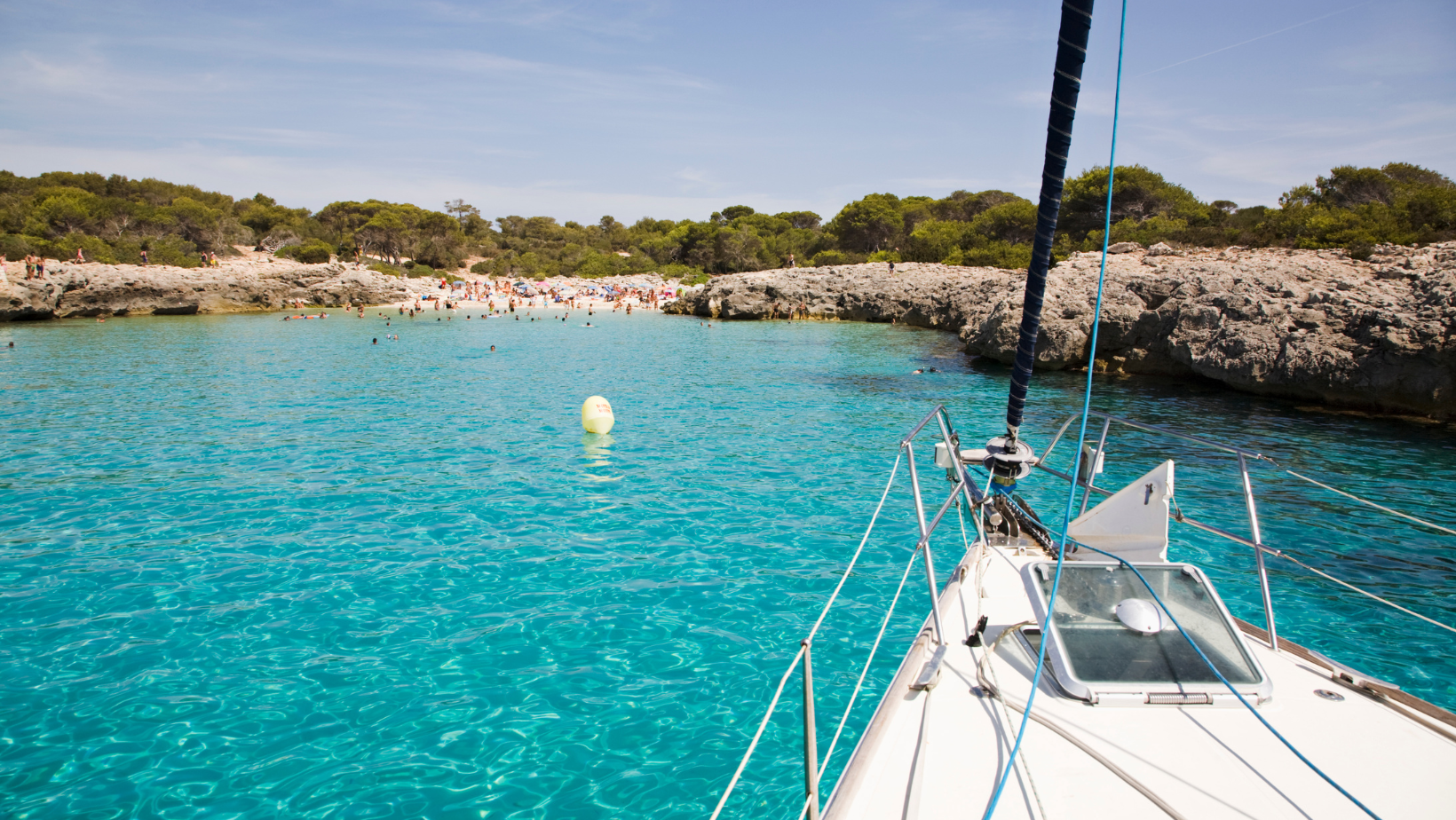- Sailing boat
- 2023
- 48 ft
Hanse 460
Castiglioncello, Tuscany
- 10 berths
- 3+1 cabins
- 2 WC
Anchoring a sailboat or catamaran is an essential skill for any sailor, whether you're planning to drop anchor for a peaceful night's sleep, enjoy a secluded swim, or explore a picturesque cove. However, anchoring requires more than just tossing a hook into the water. It demands a systematic approach, careful planning, and a commitment to safety.
In this guide, we'll take you through the steps to safely anchor your vessel, including dropping a second anchor, testing the anchor when it's dropped, and other valuable tips.
.
.

Selecting the right anchorage is paramount to safety. Look for a spot that offers protection from the wind, waves, and currents. Consider the depth of the water, making sure there's enough space for your boat or catamaran to swing without colliding with other vessels or obstacles.
While our charter companies consistently equip each boat with top-notch gear, it's a wise practice to conduct a pre-anchor check. Ensure you have the following:
Knowing the composition of the seabed is crucial. Different types of anchors work better in specific bottom conditions. Sandy or muddy bottoms are ideal for most anchors, while rocky or grassy bottoms may require specialized anchor types.
As you approach the anchorage, reduce your speed and navigate carefully. Identify a suitable spot, taking into account the depth and proximity to other boats or hazards. Assign a crew member to keep a lookout for potential issues.
Once you've chosen the perfect spot, prepare to drop anchor. Ensure all passengers know your intentions, and instruct them to don life jackets if necessary.
Lower the anchor gradually while the boat or catamaran drifts back with the wind or current. Avoid throwing the anchor, as this can lead to tangles.
Let out enough rode for the anchor to reach the seabed comfortably.

Once the anchor is on the seabed, allow the boat to drift back gently while paying out more rode.
To set the anchor, apply reverse engine power in short bursts to dig the anchor into the bottom. Check your boat's position to ensure the anchor is holding.
After setting the anchor, give it a good test. Apply moderate engine power in reverse to ensure the anchor is securely dug into the seabed. Monitor the boat's position to confirm that the anchor is holding fast.
In challenging conditions or when additional security is needed, consider dropping a second anchor. Position it at an angle of 30 to 45 degrees from the first anchor.
Pay out additional rode for the second anchor and set it in the same manner as the first. This technique, known as kedging, provides extra holding power.
Stay vigilant while anchored. Keep an eye on your boat's position and the tension in the anchor rode. Make adjustments as needed to ensure you remain in a safe and secure position.
Have a look at this other article about the best sailing apps in 2023, where we suggest an app that allows you to monitor your boat's position from your smartphone!
If you notice that your boat is dragging or not holding its position, be prepared to reset the anchor. This may involve re-anchoring or making adjustments to the scope (the ratio of anchor rode length to water depth).
When it's time to leave, retrieve the anchor carefully, making sure it's free of debris or mud. Leave the anchorage as pristine as you found it, respecting the environment and other boaters.

.
Anchoring a sailboat or catamaran safely requires careful planning, proper equipment, and a good understanding of anchoring techniques. By choosing the right location, maintaining your gear, and following a systematic approach, you can enjoy worry-free anchorages and make the most of your sailing adventures while ensuring the safety of your vessel and crew.
Safe anchoring not only protects your boat but also contributes to the preservation of our beautiful waterways.